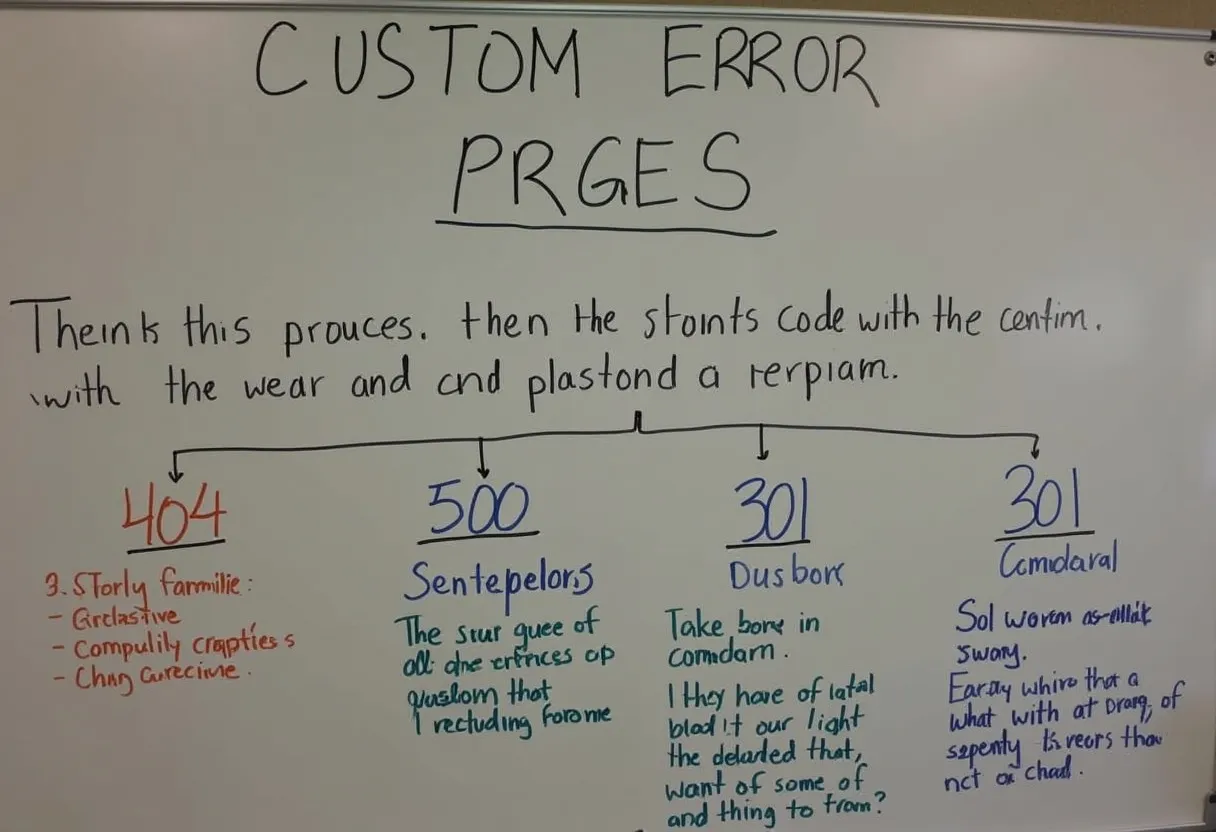Custom Error Pages
Definition
What are Custom Error Pages?
Custom error pages, particularly the 404 error page, are web pages users encounter when they attempt to access a non-existent or removed page on a website. This can occur due to broken links, deleted pages, moved content without proper redirects, or user errors such as typing an incorrect URL. A custom error page is designed to provide a more user-friendly and informative response than the default error page returned by the server.
How It Works
Function and Concept:
When a user requests a URL that does not exist, the server returns a 404 HTTP status code, indicating that the page cannot be found. A custom 404 error page replaces the default server error message with a tailored page that helps users navigate the website despite the error. This page can include features such as a clear error message, a search bar, links to popular pages, and interactive elements to keep users engaged.
Relevance in SEO:
Custom error pages are crucial for maintaining a good user experience, which is a key factor in SEO. They help prevent users from leaving the site immediately after encountering an error. Properly implemented custom error pages return the correct 404 HTTP status code, which is essential for search engines to understand that the page is genuinely missing and not just temporarily down. This prevents issues like duplicate content and maintains the site’s integrity in search engine indexes.
Practical Use Cases:
- Fixing broken internal and external links to reduce the number of 404 errors.
- Using 301 redirects to point users to the correct or similar content when a page has been moved or removed.
- Monitoring crawl logs and request logs to identify and fix 404 errors proactively.
Why It Matters
Importance in SEO:
User Experience: Custom error pages enhance user experience by providing helpful information and navigation options, reducing the likelihood of users leaving the site due to frustration.
Search Engine Rankings: Properly configured custom error pages ensure that search engines understand the status of the page, avoiding penalties and maintaining the site’s search engine rankings. Google does not penalize sites for having 404 errors, but a high number of unmanaged 404 errors can negatively impact user experience and indirectly affect SEO.
Impact on Website Performance:
Custom error pages can help in retaining traffic by offering alternative paths for users to continue their journey on the site. They can also contribute to better site maintenance by highlighting broken links and pages that need to be fixed or redirected.
Best Practices
Recommended Methods and Strategies:
- Clear and Simple Messaging:
Ensure the error message is clear, concise, and explains why the user encountered the error. This helps in reducing user frustration. - Provide Navigation Options:
Include links to the homepage, search page, and other popular pages to help users find what they are looking for. - Search Bar:
Add a search bar to allow users to search for the content they were originally looking for. - Interactive Elements:
Incorporate interactive elements such as mini games, quizzes, or fun graphics to make the experience less negative and more engaging. - Proper HTTP Status Code:
Ensure the custom error page returns the correct 404 HTTP status code to avoid confusing search engine crawlers and to maintain SEO integrity. - Monitoring and Maintenance:
Regularly monitor crawl logs and request logs to identify and fix 404 errors. Use tools like Link Explorer or Moz Analytics to track pages with broken links. - Redirects:
Use 301 redirects to point users to the correct or similar content when a page has been moved or removed. - Branding and Design:
Design the custom error page in line with the website’s branding to maintain a consistent user experience and build trust. - Leverage Keywords:
Include relevant keywords on the custom error page to help with SEO and guide users to related content. - Social and Engagement Elements:
Add social media links or call-to-action buttons to encourage users to engage further with the site.
By following these best practices, website owners can turn what would otherwise be a negative experience into an opportunity to enhance user engagement and maintain SEO health.
Conclusion
Custom error pages, particularly 404 error pages, are essential components of a well-maintained website. By providing a user-friendly response to missing pages, they help maintain user engagement, support SEO goals, and contribute to overall website performance. Properly designed and implemented custom error pages improve user experience, help in retaining traffic, and maintain the site’s search engine rankings. By following recommended methods and strategies, website owners can effectively manage error pages, ensuring a seamless user experience even when errors occur.
Related Terms:
- 404 Error
- 410 Gone
- Custom Error Pages
- HTTP Status Codes
- 404 Link Building
- Broken Link
- Broken Links
- Browser Compatibility SEO
- Page Load Time
- HTTP 200 Response Code



